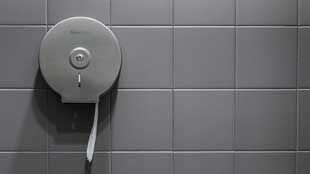Why is stainless steel a good material for public toilets?
After a long period of decline, in September 476 AD, the Roman Empire lost control over its vast territory and divided into numerous separate political entities. This event marked the fall of the Western Roman Empire. Although it happened centuries ago, its influence is still present through numerous contributions to today's society. One of these contributions to architecture is the public bath, of which one of its greatest representatives still remains: the Roman bath in Bath, England.
The first public baths had their own diverse architectural program, including everything from cold, warm, and hot pools, to services such as shops, gyms, and libraries. Over time, public baths evolved, becoming more sophisticated and compact, utilizing new materials and technologies, and integrating with the program of large-scale buildings. As part of this evolution, modern materials such as stainless steel were incorporated into the equipment developed by companies for toilets, mainly due to its hygienic and maintenance properties.

Why is it worth using stainless steel in public toilets?
But why use stainless steel in public bathrooms? Stainless steel is extremely versatile in architectural applications. Its resistance is particularly useful in humid environments, such as bathrooms and sanitary areas. It does not rust or corrode, even under the influence of moisture and aggressive cleaning agents. In addition to its durability, it allows for the development of solutions with different characteristics. One of the most representative elements are screens, which are both aesthetic and impact-resistant.
Screens, such as those from the Sanilock brand, are made of type 304 stainless steel, with a thickness of 3 in thickness 22. The characteristic feature of these screens is their diversity, as they can be produced in different models, from bracket-mounted (without contact with the floor and ceiling, with wall mounting) to floor-mounted, with different sizes and finishes. As for dimensions, they can range from panels with a length of 0.46 m to 0.78 m; pilasters from 0.12 m to 0.60 m, and doors with dimensions from 0.55 m to 1.00 m. This wide range of dimensions allows for its adaptation to both public bathrooms in the design process and to existing ones.
Steel screens for toilets
The materiality of stainless steel screens is available in two types of finishes: standard smooth stainless steel and Inoxlock finish, which includes textured steel sheet. This duality allows for the creation of different environments in the design of public bathrooms, opening up the possibility of developing a sober aesthetic using smooth steel or seeking compositions with the rest of the bathroom materials through textured finishes.
The versatility of stainless steel also allows for the production of smaller parts and accessories than screens, which serve as connecting elements or complements. Its diversity not only allows for the creation of a single-material and cohesive aesthetic, but also maximizes the exposure of the metal's qualities, from lightly visible elements such as mounting parts like screws, corners, and hinges, to those with which we often interact, such as pins, hooks, and handles.
Other stainless steel accessories
Among the elements coexisting with bathroom modules are urinals, mirrors, shelves, and sinks. In the case of stainless steel, corrosion resistance is ensured because this type of steel contains chromium, which creates a thin layer of chromium oxide on the metal surface. This process, known as "passivation", creates a protective barrier. In addition, stainless steel provides easy cleaning and simplified aesthetics in areas with high usage, allowing for quick installation of bathroom furniture and requiring minimal maintenance. These furniture pieces are made of type 304 stainless steel, with an 18mm PVC coating and polished rounded edges, ensuring the safety of users in public bathrooms.
As for the specifics of each, sinks are prepared for one to four faucets, allowing for a maximum of four people to use them. Urinals are supplied with water through time valves, which regulate responsible water consumption.
Shelves and mirrors use tungsten welding and argon during their production to maintain the stainless steel properties of the metal, and then undergo polishing to eliminate any imperfections. In the case of mirrors, 22 mm thick stainless steel was used to achieve a polished reflective surface, while the inner body was reinforced with a ¼ inch thick MDF panel. Both public bathroom furniture, mirrors, and shelves have a minimalist, industrial aesthetic that, when combined with elements made from the same material or other material palettes, create a balanced and modern atmosphere. This shows that stainless steel, in addition to its technical properties, can stand out on the mood board of any project.
In public bathrooms, antiviral handrails serve as elements that facilitate the use and movement of people with disabilities within bathroom modules, promoting functional, aesthetic, and durable spaces. These bars are made of 304 stainless steel with a satin finish, in size 18, diameter 1 1/4" x length 36". They use welded joints identical to the material, thick and polished, and have a decorative cover to hide the anchor. Other accessories that stand out for their use of stainless steel are soap dispensers, towels, or toilet paper, which have a satin finish, making them resistant to corrosion and very durable for installation in public use areas.
Summary
In summary, stainless steel is a versatile and beneficial material for public bathrooms and sanitary facilities due to its strength and properties. From screens to sinks, urinals, and accessories, stainless steel offers an aesthetic, functional, and easy-to-maintain solution. The ability to customize to different dimensions and finishes allows for the creation of personalized environments. Overall, the use of stainless steel improves hygiene, durability, and aesthetics in public bathrooms, meeting the needs of high-traffic spaces and promoting a clean and functional environment for users.

